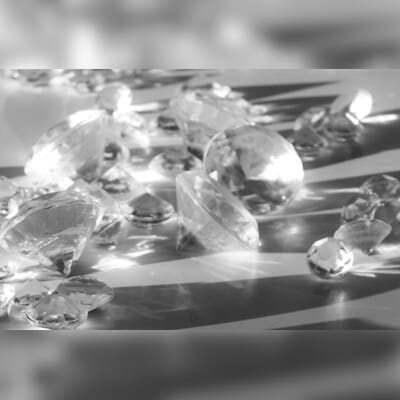The value of a lab-cut and polished diamond is 6 to 8 times greater than its raw form | Photo: Pexels
Significant price declines, eroding consumer interest and competition with imports are some of the key challenges facing the domestic lab-grown diamond industry, think tank GTRI said on Sunday.
He also said that while India is facing the problem of excess production capacity, it continues to import lab-grown diamonds in large quantities and this issue needs further investigation.
To address these challenges, the government must take certain measures, such as establishing clear and consistent rules to standardize quality, certification, and market practices; issuing a Quality Control Order to verify the quality of imports; and investing in research and development to improve production processes, reduce costs, and improve the quality of lab-grown diamonds.
The Global Trade Research Initiative (GTRI) said India’s lab-grown diamond industry is facing a major challenge, with prices falling 65 per cent in the past year from Rs 60,000 to Rs 20,000 per carat due to local overproduction and oversupply from abroad.
This sharp decline is a sign of problems such as overproduction, high imports and lack of regulation, which are damaging consumer confidence. Urgent corrective measures are needed to get this high-growth industry back on track, he added.
Meanwhile, natural diamonds cost around Rs 3.5 lakh per carat and this price fall is making it difficult for manufacturers to repay loans taken to buy machines to make lab-grown diamonds, putting them under financial stress, he said.
Lab-grown diamonds, as the name suggests, are created in laboratories that replicate the natural high-pressure, high-temperature conditions under which diamonds form in the Earth’s mantle.
These diamonds are chemically, physically, and optically identical to natural diamonds. Natural diamonds come in various shapes, while lab-grown diamonds are usually square or rectangular. Lab-grown diamonds are produced in rough form and must be cut and polished, just like natural diamonds.
The value of a lab-grown, cut and polished diamond is 6 to 8 times greater than its raw form.
“The industry is facing several challenges, including falling prices, intensifying competition from both local and imported products, and lack of clear regulatory frameworks. These issues pose potential risks to the sustained growth and profitability of India’s lab-grown diamond sector,” said GTRI Founder Ajay Srivastava.
He said the number of units producing lab-grown diamonds in India has increased to 10,000 units, leading to oversupply and tougher competition.
He also said it is easy to replace natural diamonds with lab-grown ones in jewelry with many small stones to save costs.
“The human eye cannot distinguish them; only an expensive machine (costing around Rs 15 lakh) can identify them. This raises concerns as people wonder if the diamond necklace they bought is made of lab-grown diamonds while they paid for natural diamonds, leading to trust issues,” Srivastava said.
The industry lacks clear regulations to control such practices, making it difficult to ensure quality. Lack of proper certification and lack of trust in market operations could hinder the industry’s growth.
He added that 98 percent of India’s imports of lab-grown rough diamonds come from Hong Kong and the United Arab Emirates.
About 20 percent of imported rough diamonds were cut and polished for export, while the remainder was used in the local market.
GTRI suggested that regulation and standardization will reduce uncertainty and ensure fairness in the industry.
The Ministry of Consumer Affairs should create guidelines to clearly label and certify lab-grown diamonds in jewelry, and sales invoices should clearly indicate whether the jewelry they sell includes lab-grown diamonds, he said.
The main producers of lab-grown diamonds are China, the United States and India. Globally, the market for lab-grown diamonds is expanding, especially in the United States, Europe and Asia.
“India’s lab-grown diamond industry is poised for significant growth, with the potential to become a global leader in the sector. However, addressing the challenges of overproduction, reduced imports, price volatility, financial stress and regulatory ambiguities is crucial for the long-term sustainability of the industry,” Srivastava said.
People buy lab-grown diamonds instead of natural ones for several reasons, such as that lab-grown diamonds look just like natural diamonds, with the same brilliance and strength. They are also much cheaper, often costing ten times less.
This substantial price difference makes lab-grown diamonds a more affordable option for consumers, even though they look and feel the same as natural diamonds.
(Only the headline and image of this report may have been reworked by Business Standard staff; the rest of the content is auto-generated from a syndicated feed.)
First published: August 11, 2024 | 15:10 IS
Disclaimer:
The information contained in this post is for general information purposes only. We make no representations or warranties of any kind, express or implied, about the completeness, accuracy, reliability, suitability or availability with respect to the website or the information, products, services, or related graphics contained on the post for any purpose.
We respect the intellectual property rights of content creators. If you are the owner of any material featured on our website and have concerns about its use, please contact us. We are committed to addressing any copyright issues promptly and will remove any material within 2 days of receiving a request from the rightful owner.

